Migraine Symptoms: Beyond the Headache
Table of Contents

Migraine Symptoms: Beyond the Headache
Migraine symptoms extend far beyond the typical bad headache many imagine, often hijacking lives with intense pain and a bewildering array of other manifestations. If you or someone you know grapples with these severe headache episodes, you understand the disruptive force they wield, capable of turning mundane tasks into insurmountable feats. It’s not simply a headache; this complex neurological condition demands a deeper examination, precisely what we offer here.
The Migraine Misconception: More Than Just a Headache
For too long, the common perception of migraine has been one of mere head pain, perhaps a particularly unpleasant one, yet this simplification fails to capture the true, debilitating nature of this neurological condition. Migraine symptoms are not merely an intensified headache; they are signals from a deeply disturbed nervous system. Consider Jennifer, a marketing professional whose career once soared. Then, without warning, the world began to dim, quite literally. Flashing lights would precede a unilateral skull-splitting, throbbing pain, pushing her into days of bedridden misery, productivity a distant memory. The invisible nature of her suffering led to frustrating comments: “You look fine.” “Can’t you just push through it?” This dismissive outlook, regrettably, echoes a widespread societal misunderstanding that undervalues the profound impairment migraines impose. We often hear stories of individuals whose schedules are dictated by the looming threat of an attack; plans, once etched in stone, dissolve into uncertainty. This insidious pattern affects millions, with each attack a testament to migraine’s power to undermine daily life. Have you ever felt utterly powerless, your own body turning against you, forcing retreat from the world? That is the experience.
A Headache Through Time: Historic Migraine Symptoms
The perplexing nature of migraine symptoms has engaged human curiosity for millennia, its origins lost in the mists of ancient observation. Our predecessors, long before the advent of modern neuroscience, grappled with these intense, often unilateral head pain episodes, meticulously recording their experiences. Imagine the ancient Mesopotamians, 3000 BCE, etching descriptions of “sick headaches” onto clay tablets, or the Egyptians, perhaps around 1550 BCE, detailing head afflictions within the Ebers Papyrus. Their early interpretations were, of course, a blend of nascent medical thought and spiritual belief; sometimes, relief was sought through practices like trepanation—drilling holes in skulls, a stark illustration of desperate measures against perceived evil spirits.
Hippocrates, the revered Greek physician from around 400 BCE, provided some of the earliest clinical accounts of migraine. He noted distinct visual phenomena, often shimmering lights, a precursor to what we now identify as aura. He also observed the characteristic unilateral head pain, a sensation often so severe it provoked vomiting, which, curiously, sometimes brought fleeting relief. These insights, though couched in humoral theory—a belief that bodily fluids, or “humors,” influenced health—marked a crucial shift toward physiological explanations.
Centuries later, the Roman physician Galen (130–200 CE), building on Aretaeus of Cappadocia’s descriptions of “heterocrania” (unilateral headaches), coined “hemicrania,” literally “half of the skull.” This term, a linguistic ancestor to “migraine,” solidified the understanding of a specific, one-sided head pain condition. By the Islamic Golden Age, thinkers like Avicenna (circa 1000 CE) further refined these observations, identifying specific environmental aggravators: noise, bright light, even certain foods. He noted how sufferers instinctively retreated into dark, quiet rooms, a practice still recommended today. Others, like Abu Bakr Mohamed Ibn Zakariya Râzi, perceived the hormonal connections, noting associations with menstrual cycles, pregnancy, and menopause. What a testament to the enduring consistency of migraine symptoms, its underlying biological currents having remained remarkably constant throughout human history, despite radical shifts in medical frameworks.
Your Brain on Migraine: What Modern Science Reveals about Migraine Symptoms
Modern scientific investigation, armed with sophisticated tools, offers a much more granular perspective on what drives migraine symptoms. We no longer attribute these incapacitating episodes to “vapours” or “evil spirits.” Instead, our understanding now centers on a tangled interplay of the nervous system, intricate brain chemistry, and blood flow dynamics, a symphony of neurobiological events orchestrated in the brain.
At the heart of this complexity lies genetics; evidence suggests a significant hereditary component. If a parent struggles with migraines, a child faces a roughly 50% likelihood of inheriting the condition. This genetic predisposition sets the stage for a brain that, under certain circumstances, becomes hypersensitive. One such circumstance involves what scientists refer to as Cortical Spreading Depression (CSD). Imagine an electrical wave, a slow ripple of activity, traversing the brain’s surface. This CSD is thought to initiate the cascade of events, particularly those peculiar aura symptoms that some individuals experience. It’s a fundamental disruption, a temporary electrical storm that can activate pain pathways.
Beyond these electrical phenomena, specific chemical messengers—neuropeptides—play a crucial role. Calcitonin gene-related peptide (CGRP), for instance, acts like a siren, signaling pain and inflammation. Its increased release during an attack contributes significantly to the throbbing sensation synonymous with migraine pain. Serotonin, another neurotransmitter, also finds itself caught in this biochemical dance, its fluctuating levels impacting pain regulation.
Then there are hormones, particularly estrogen, which serve as major players in the migraine narrative. This explains the higher prevalence of migraine among women and the strong links to menstrual cycles, pregnancy, and menopause. Hormonal shifts can act as powerful triggers, influencing the brain’s susceptibility to an attack. Take Sarah, for instance, whose migraines became a regular unwelcome guest with her monthly cycle. Her body’s internal rhythm, usually a source of predictable order, became an erratic harbinger of discomfort.
So, when a migraine descends, it is not merely a localized event. It is a systemic neurological disarray, a highly organized chaos that temporarily reconfigures the brain’s operation, manifesting in a myriad of disquieting migraine symptoms.

The Migraine Rollercoaster: Understanding Each Migraine Attack Phase
Migraine symptoms do not just materialize as a sudden, brutal head pain; they unfurl as a progression, a sequence of distinct phases that can extend over several days. Not everyone experiences every stage, nor does each attack necessarily follow the same pattern, yet grasping these four common acts offers immense clarity.
Act 1: The Prodrome (Pre-Show Nerves)
Hours, even days, before the main event, subtle hints often emerge. Think of these as your brain’s peculiar pre-show jitters. You might notice:
- Mood swings: Unexplained euphoria one moment, plummeting into gloom the next. It’s like an emotional whiplash.
- Food cravings: A sudden, intense desire for specific foods, often sweet or salty.
- Stiff neck and frequent yawning: These physical tells, often dismissed as fatigue, can signal the impending attack.
- Heightened sensitivity: You might feel extra sensitive to light or sound, a precursor to the full-blown attack.
These early signs, though easily overlooked, are the initial whispers of a migraine. My friend Mark once described it as “a weird feeling, like the air itself is heavier, before the real storm hits.”
Act 2: The Aura (Light Show Gone Wrong)
Roughly a third of migraine sufferers experience an aura, a transient neurological disturbance typically preceding the headache, though it can occur during or even without head pain. These are reversible symptoms, often visual, but sometimes sensory or motor:
- Visual disturbances: Flashing lights, shimmering zigzag lines, blind spots, or temporary vision loss. I’ve heard people describe it as looking through a cracked window or seeing a kaleidoscope.
- Sensory symptoms: Tingling, numbness, often starting in one extremity and spreading, like “pins and needles.”
- Speech difficulties: Struggling to find words or speaking clearly, a truly disorienting experience.
Aura symptoms usually develop gradually over minutes and rarely persist beyond an hour. They are direct manifestations of the cortical spreading depression we discussed, a temporary disruption in brain activity.
Act 3: The Attack (Main Event Mayhem)
This is the phase everyone pictures when thinking of migraine symptoms: the intense, throbbing, pulsating head pain. Typically:
- Location: Often, but not exclusively, on one side of the head, though it can migrate or become generalized.
- Duration: Lasting anywhere from 4 to a brutal 72 hours, its severity worsening with physical activity. Trying to “push through” it often exacerbates the pain.
- Accompanying Guests: Nausea and vomiting are common, affecting nearly 90% and a third of sufferers respectively. Extreme sensitivity to light (photophobia), sound (phonophobia), and even smell (osmophobia) transforms everyday environments into torture chambers. One patient recounted how the mere scent of coffee, usually a comfort, became an unbearable assault during an attack.
Act 4: The Post-drome (The Hangover)
When the head pain finally subsides, you are often left with a “migraine hangover.” This phase, lasting up to a day or two, leaves you:
- Wiped out: Profound fatigue and a general feeling of being unwell.
- Foggy: Mental confusion, difficulty concentrating, and a lingering sense of disorientation.
- Fragile: Sudden head movements can briefly reignite a flicker of the headache pain.
As one sufferer put it, “It’s like my brain ran a marathon, but my body just lay there.” This post-drome marks the slow return to normalcy, a period of recovery from the physiological upheaval.
These phases underscore why recognizing the full spectrum of migraine symptoms is crucial, moving beyond mere head pain to acknowledge the complex neurological storm.
“But Is It Really a Migraine?”: Why Migraine Diagnosis Remains a Challenge
Here’s a significant hurdle: unlike many other conditions, there isn’t a single blood test, X-ray, or MRI scan that definitively screams, “Yep, that’s a migraine!” Doctors rely heavily on your detailed story, a clinical diagnosis rooted in subjective experience, making migraine diagnosis inherently challenging.
The Diagnostic Dilemma:
Even medical experts debate the precise criteria. What distinguishes an “episodic migraine” from “chronic migraine,” where headaches occur more than 15 days a month? The lines blur. Consider the less common variations: “abdominal migraine,” a phenomenon primarily affecting children, manifesting as recurrent stomach pain without the typical head involvement; or “migraine with brainstem aura,” presenting with vertigo, slurred speech, or double vision. These atypical presentations confound easy classification. My own neurologist once remarked, “Migraine can be a chameleon; it mimics so many other things.”
Mistaken Identity: When Migraine Symptoms Deceive
Migraines frequently masquerade as other common ailments, leading to misdiagnosis and delayed appropriate treatment.
- Tension headaches: Often confused, yet migraines typically involve pulsating pain, nausea, and sensitivity to light/sound, absent in simple tension headaches.
- Sinus headaches: Many migraine sufferers experience facial pressure or nasal congestion, leading them to believe they have a sinus infection. The truth often involves trigeminal nerve activation, not sinus inflammation.
- Cluster headaches: These inflict excruciating, burning pain around one eye, a stark contrast to the throbbing, often unilateral, migraine pain.
- “Silent migraines”: A perplexing variant where all the dramatic aura symptoms unfold—visual disturbances, tingling, speech issues—yet no headache follows. Imagine the bewilderment: a light show in your eyes, but no pain to explain it.
It is a landscape rife with misinterpretation, where a singular symptom can point to multiple possible underlying conditions.
The Patient’s Predicament: Living with Migraine Symptoms
Being a migraine patient is tough, often isolating.
- Trigger Identification: Pinpointing specific triggers is a Herculean task. Is it the red wine? The sudden barometric pressure drop? Stress? An expert once quipped, “Everything can produce a migraine!”
- Under-recognition: Many do not even realize their “bad headaches” are, in fact, migraines. They attribute them to stress, fatigue, or eye strain, never seeking specialized care.
- Delayed Help: Patients often endure years of suffering before consulting a doctor. Why the wait? Fear of not being taken seriously, concern over costs, or simply the belief that “this is just my normal.” We need to shift that mindset. As one anonymous survey responder expressed, “I felt like I was being dramatic, so I just dealt with it.” This sentiment is far too common.
- Invisible Illness: The pain remains unseen. You might appear perfectly healthy, yet internally, a storm rages. This invisibility fosters a lack of empathy and can lead to frustration and stigma from employers, friends, and even family. “I wish people could see what I’m going through,” shared another patient, reflecting the profound isolation.
Effective migraine diagnosis requires a patient-doctor partnership, where symptoms are meticulously documented, and a comprehensive medical history forms the bedrock of an accurate assessment, often including a headache diary to track patterns.
Ready to take control of your migraines? Download our free migraine symptom tracker today and start building a clearer picture of your attacks.
Beyond the Horizon: Future Migraine Symptoms Understanding and Treatments
The future for those grappling with migraine symptoms is undeniably brighter, marked by scientific breakthroughs and the promise of more personalized, effective interventions. We are moving lightyears beyond ancient remedies and even mid-20th century theories.
Smarter Science: Decoding Brain Function for Migraine Symptoms
Researchers are relentlessly dissecting the brain’s intricacies, revealing the subtle ways various regions interact during an attack. Our focus now sharpens on the trigeminovascular system, that network of nerves and blood vessels central to head pain. Repeated activation of this system can lead to persistent nervous system hypersensitivity, manifesting as chronic pain and heightened sensitivity to light and sound.
The peptide CGRP, which we mentioned earlier, remains a significant target. Scientists are identifying new proteins that activate sensory nerves, presenting fresh targets for drug development. Genetic research is particularly exciting, moving towards tailoring treatments to a patient’s unique DNA profile. Imagine a future where a genetic test could precisely indicate which therapy would work best for your migraine symptoms. That’s the ambition.
Fancy New Tools for Objective Migraine Diagnosis
While currently reliant on patient accounts, the diagnostic landscape is evolving. Think of an MRI scan, not just to rule out other conditions, but to objectively spot the subtle structural and functional changes indicative of migraine. Researchers are finding distinctive brain characteristics—reduced cortical thickness, altered folding patterns—in migraine sufferers. These “biomarkers” could revolutionize diagnosis, allowing for earlier, more accurate identification and treatment. “Finally,” one patient might say, “proof it wasn’t all in my head!”
Exciting New Treatments on the Block for Migraine Symptoms
The pharmaceutical pipeline is overflowing with innovations aimed squarely at migraine.
- CGRP-Targeted Therapies: These are transformative.
- Monoclonal Antibodies (mAbs): Injections like Erenumab, Galcanezumab, Fremanezumab, and Eptinezumab work by blocking the CGRP pathway, preventing attacks. They are game-changers for many.
- Gepants: Oral pills (ubrogepant, rimegepant, atogepant, zavegepant) can both stop an acute attack and prevent future ones. These are significant for their efficacy without the vascular risks sometimes associated with older acute medications.
- Ditans: Lasmiditan is a new acute treatment that calms the neurogenic inflammation without constricting blood vessels, offering a safer option for those with cardiovascular concerns.
- High-Tech Devices: Non-invasive gadgets that stimulate or zap nerves are providing drug-free relief for both acute attacks and prevention. Examples include remote electrical neuromodulation devices (like Nerivio), non-invasive vagus nerve stimulators (nVNS), and transcranial magnetic stimulation (sTMS mini). These offer valuable alternatives, particularly for patients with medication sensitivities or contraindications.
- Beyond Medications: Never discount the power of fundamental lifestyle adjustments.
- Stress management: Techniques like meditation or cognitive behavioral therapy (CBT) can dramatically reduce attack frequency and severity.
- Consistent routines: Regular sleep, scheduled meals, and adequate hydration form the bedrock of migraine prevention.
- Trigger avoidance: Identifying and eliminating known triggers, even if it feels like a constant detective mission, empowers you.
Ultimately, the goal is “precision medicine,” a highly individualized approach where treatments are perfectly matched to your specific migraine symptom profile, maximizing relief and minimizing side effects. This personalized approach promises a future where migraine sufferers can reclaim control over their lives.
Frequently Asked Questions About Migraine Symptoms
Here are some common questions many people have about migraine symptoms:
Q1: What are the main signs of a migraine attack?
A migraine attack typically involves intense, throbbing head pain, usually on one side. Common accompanying symptoms include nausea, vomiting, and extreme sensitivity to light, sound, and sometimes smell. Physical activity often worsens the pain, which can last from 4 to 72 hours.
Q2: How do I distinguish a migraine from a regular headache?
Migraines usually involve a distinct set of severe migraine symptoms beyond just pain, such as throbbing or pulsing sensation, nausea, and sensitivity to light and sound. Regular tension headaches are often milder, cause a steady ache, and lack these associated symptoms.
Q3: Can someone experience migraine aura without a headache?
Yes, this is known as “silent migraine” or “migraine aura without headache.” Individuals experience the neurological symptoms of aura, like visual disturbances or tingling, but do not develop the typical head pain.
Q4: Are specific foods or environmental factors known to trigger migraine symptoms?
Many factors can trigger migraines. Common triggers include hormonal changes, stress, certain foods (like aged cheese, processed meats, or artificial sweeteners), caffeine withdrawal, strong smells, bright lights, loud noises, and changes in sleep patterns or weather.
Q5: What are the different phases of a migraine attack?
A migraine attack often progresses through four phases:
- Prodrome: Pre-headache symptoms like mood changes, food cravings, stiff neck.
- Aura: Reversible neurological symptoms such as flashing lights or tingling.
- Attack: The main headache phase with throbbing pain, nausea, and sensory sensitivities.
- Post-drome: The “migraine hangover” phase, characterized by fatigue and confusion.
Q6: Is migraine a hereditary condition?
Yes, migraine often has a strong genetic component. If one or both parents experience migraines, there’s a higher chance their children will also develop the condition, indicating a hereditary predisposition to migraine symptoms.
Q7: How is migraine diagnosis established without a specific test?
Migraine diagnosis relies primarily on a clinical assessment. Doctors evaluate your reported migraine symptoms, medical history, family history, and perform a physical and neurological examination. Keeping a detailed headache diary helps track patterns and aids in diagnosis.
Conclusion: Taking Control of Migraine Symptoms
Migraine symptoms, as we have explored, present as a deeply personal yet universally disruptive force. This complex neurological condition is far more than an ordinary headache; it’s a multifaceted challenge impacting millions. From ancient observations of “sick headaches” to modern understandings of CSD and CGRP, our recognition of migraine’s true nature has evolved profoundly. The journey through its distinct phases—prodrome, aura, attack, and post-drome—underscores the systemic upheaval it causes. While diagnosis remains rooted in individual experience, the horizon promises precise tools and treatments, moving towards a future where managing migraine symptoms is more effective and individualized.
Remember, understanding these patterns is your first step toward gaining some control. Don’t let migraine symptoms dictate your life.

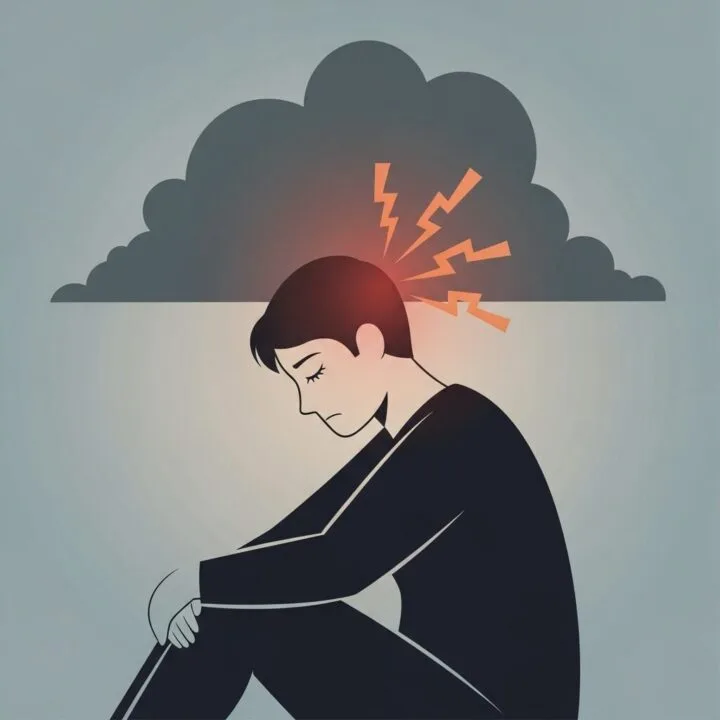
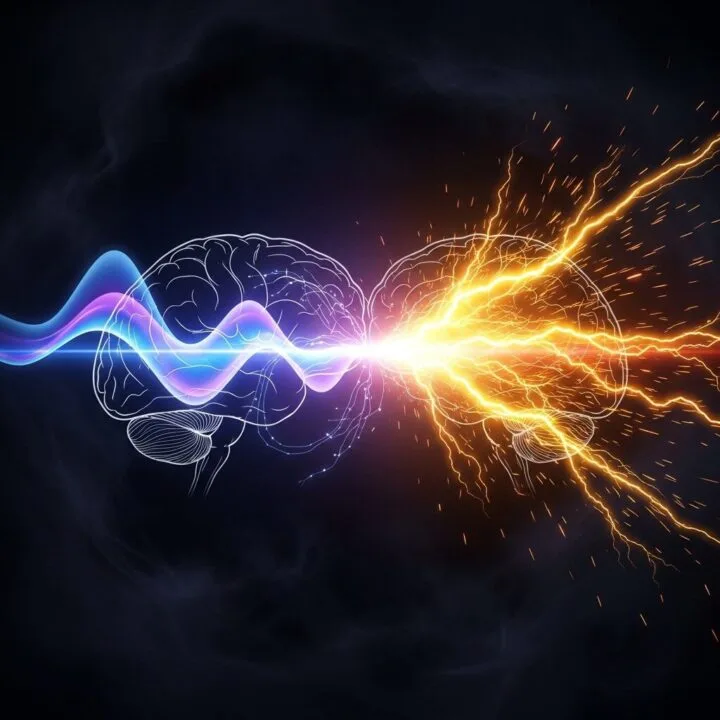
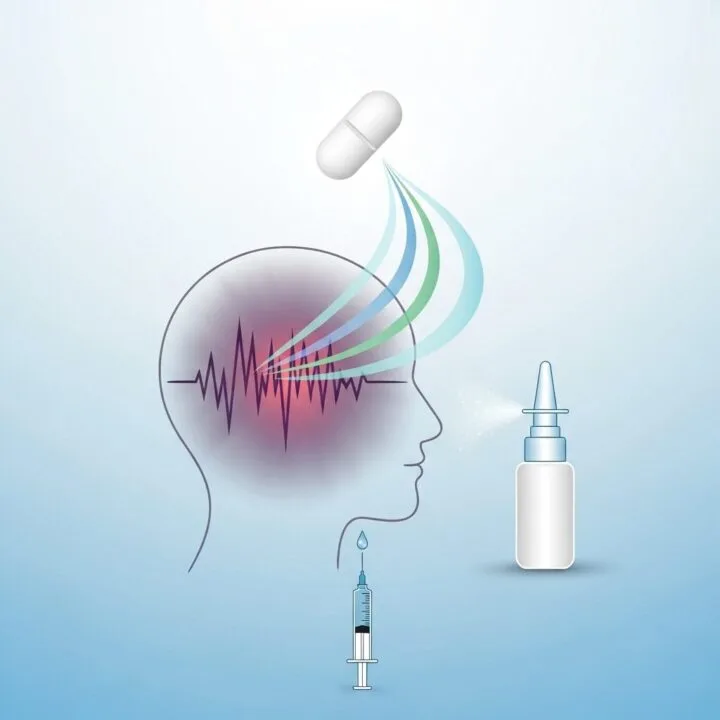
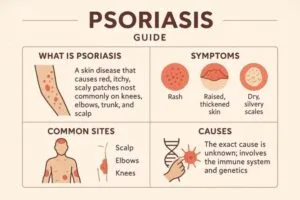




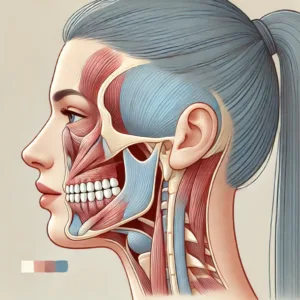




Post Comment